Without koi pond filtration, several things can and will most likely happen:
1) Koi pond will turn green, rendering the pond fish invisible.
2) parasites and other harmful life forms will easily spread from one fish to another.
3) Koi pond will become unsightly and foul-smelling.
4) the pond will be poorly aerated; and worst of all.
5) the water quality can become deadly to its inhabitants, which may lead to a massive fish kill. This reasonable if koi Pond filtration needed for every koi keepers.
Basic Requirenment To Built Koi Pond Filter
1. Proper planning and setting up of the filtration system, for every koi pond built. It is best to have this done while the pond is still in its planning stages as well. If not , It will also result in more frequent and labor-intensive cleaning of the filters. Sooner or later, the hobbyist will shell out more funds in order to correct his poor filtration set-up. This is not to mention the potential loss of expensive koi due to poor filtration.If The Koi Pond not proper planing koi keeper must clean water manually almost every day to get clean water. You must prepare koi pond design before built it.
2.Filter Volume
Recommend a filter volume of not less than 33% of the total pond volume. If We have koi pond with 9000 gallon , filter must not leess than 3000 gallon.Koi Pond Filter can separated in several chamber.There are 3 chamber foltir, 4 chamber etc.
3. Water flow rate
Water flow rate is another important point to consider when designing a Koi pond filter. Filtering the water requires a way by which dirty water will be passed through the filters and delivered back to the koi pond as clean water 24 hours a day. This is achieved by using water pumps. When one speaks of the filter flow rate, what is referred to is the rate at which the pump moves the water through the filter. Recommend a filter flow rate equivalent to displacing the entire pond volume within one hour.
Example if Koi Pond 9000 gallon in one hours pump must flow water 9000 gallon via filter.The filter flow rate should be based on the actual rate at which water is taken out of and returned back to the koi pond, not on what the pump is labeled to be capable of.
4. Water Pump Selection
There are two type of pumps used in koi keeping, the submersible pump and the recirculating pump. For small ponds and water falls, submersible pumps are preferred because they are unobtrusive and silent by virtue of their being submerged underwater while operating.
For large ponds, however, recirculating pumps would be the wiser choice because of their efficiency and long life. Most koi experts recommend setting up two pumps of smaller capacities than buying just one pump of higher capacity to meet the flow rate requirements.
Pond Filter Structure and Equipment

Pic.2. Comercial Filter Structure
Once the filter capacity and pump flow rate have been established, the filtration stages must be designed. Filters work best if they consist of numerous stages, with each stage specially designed to accomplish a filtration task that the others can not. Having such specially-designed filter stages will allow all harmful wastes and debris to be removed effectively.
A filtration system usually has a couple of stages for mechanically filtering out suspended debris,
and another couple of stages for biological filtration of the water.
1. Mechanical filtration , consists of physically trapping the particulate wastes and debris in the water.
Sand, beads, pads, and brushes are the commonly-used materials for mechanical filtration. Passing the water through these materials traps whatever suspended materials are in the water, e.g., leaves, twigs, fish feces, etc. The first mechanical filter stage usually uses brushes as the trapping medium, because these only trap the relatively larger debris in the water, allowing the smaller ones to pass through.
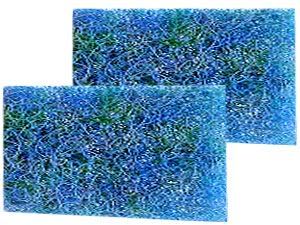
Japan Filter Matt For Mechanical Koi Pond Filter
The second mechanical filter stage usually uses Japanese filter mats, beads, or sand to trap the smaller particles in the water. More mechanical filter stages may be added, with the trapping size getting smaller as the filter stages progresses.
2. Biological filtration, as the name implies, employs natural biological processes to convert the harmful wastes excreted by the koi and those produced by decaying plant matter in the pond into less invasive compounds.
Koi excrete ammonia, which is deadly to koi in large doses. Certain anaerobic (non-oxygen-breathing) bacteria convert ammonia into nitrites, which are, unfortunately, also poisonous to koi. The good thing is, there are 'good' aerobic (oxygen-breathing) bacteria that convert nitrites into nitrates, which are no longer deadly to koi.
These 'good' bacteria are also known as nitrifying bacteria. Nitrifying bacteria occur freely in nature, and will populate your pond in time.
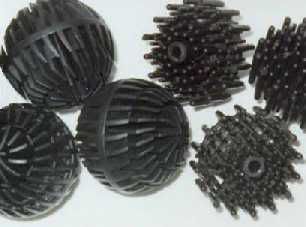
Bioball as Biologicall Filter Koi Pond
Biological filters usually use bio-balls, sintered glass, porous rocks, ceramic rings, or synthetic high-surface area particles as filter media. Biological filter media are designed to have as much surface area as possible for a given volume, in order to maximize the good bacteria population within the filters.
3.Chemical Filtration
Chemical filters make use of activated carbon as a filtration media that helps absorb chemicals. The carbon used can be cleaned in salt water and reused again. It is important not to use salt water in your pond when using a chemical filter as it might release some of the ammonia. Chemical filtration involves purifying the koi pond water of harmful chemicals by chemically binding them to the filter media. This method of filtration is extremely useful to remove chlorine, pesticides, heavy metals, ammonia and other chemical impurities from the pond water. Chemical filters can help improve the pond clarity and remove pond odor.
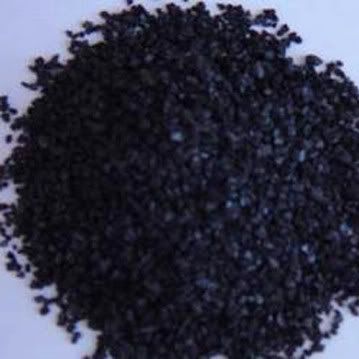
Activated Carbon as Chemical Filter Koi Pond
4. Bottom Drain
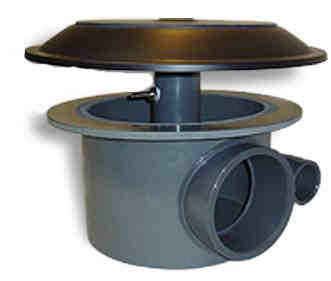
Bottom Drain
Bottom drain is a drain at the bottom of the pond where dirty water is sucked by the pump for transport to the filter chambers. The bottom drain is normally placed at the center of the koi pond, and should be the lowest point on the pond bottom. Thus, the entire pond bottom surface must slope towards the bottom drain. Pond with no bottom drain will need frequent cleaning of its floor.
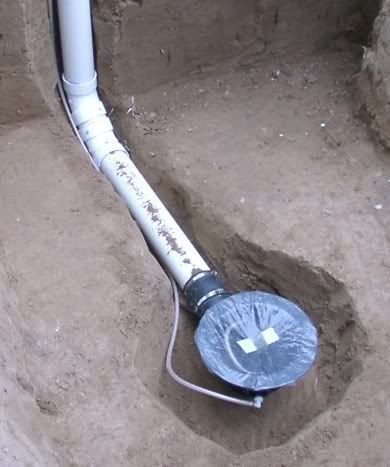
Installing Bottom Drain to the pond
5. Ultraviolet Lamp
Ultraviolet lamp systems for killing algae may also be considered if green water is a persistent problem for you. In fact, many koi experts consider the uv sterilizer as a 'must-have' item for successful koi keeping .These are usually placed before the mechanical filters since uv light makes dead algae clump together. Not All Pond filter design need uv light to keep the water clear though, so you may want to go for this as well. If Biological Filter in the koi pond can't work in maksimum condition UV lamp can help reduce algae in our koi pond.
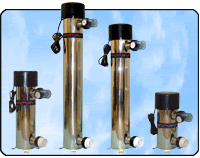
Ultra Violet Lamp
6. Surface Skimmer
Surface skimmers for removing wastes on the surface of the Koi pond will also be required by your pond. There are floating particle in the surface of koi pond from Koi feces, food etc. If not cleaned not good for water quality. Survae skimmer can remove it.
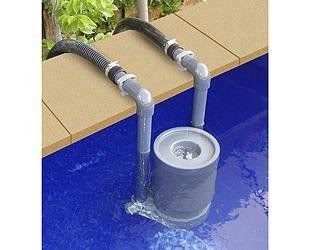
Floating Surface Skimmer Koi Pond
REFERENCE
1.Koiandpond
2.Abcpond
3.koicymru
